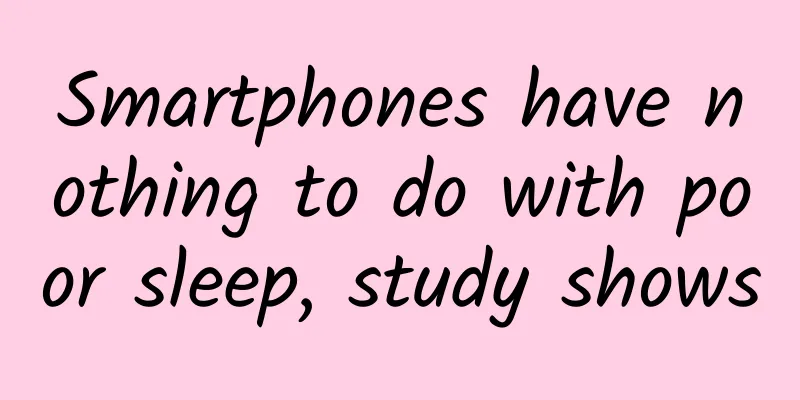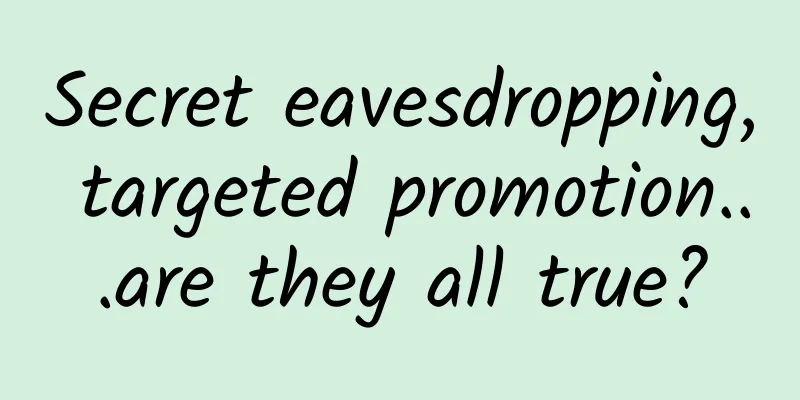Do people with photographic memories really exist?

|
© Genetic Literacy Project Leviathan Press: The writer Borges once told a story: the cartographer of the empire drew a 1/1 map of the empire, with no missing details. The "cartographies of an empire reached such perfection that the map of a single province occupied the entire city, and the map of the empire occupied the entire province". Until "the cartographers' guild drew a map of the empire, the size of which coincided with the size of the empire". Some people believe that this story describes a simulation of reality that eventually became reality itself, and is also about the absurdity and fear of near infinity. Of course, stories are just stories. Although there are masters of memory who are well-informed and have photographic memories in real life, when it comes to the nature of memory, it seems that there is no difference between us. From an evolutionary perspective, the moderation and selectivity of human memory are precisely the important foundation for our survival - complete amnesia will lose the perception of time, and remembering all the details of the past also means a heavy burden. As for Shereshevsky mentioned in this article, I think he is more like Borges's "Funes the Memorable", "... he learned English, French, Portuguese, and Latin without much effort. But I don't think his thinking ability is very strong. Thinking is to forget differences, to generalize, to abstract. In Funes's world full of pits and valleys, there are only details that are within reach." One day in April 1929, the editor of a Moscow newspaper was assigning assignments when he noticed that one of his reporters had not taken any notes. The editor pulled the reporter aside to ask him about it, and the reporter, Solomon Shereshevsky, said that he never took notes because he had a perfect memory. Shereshevsky then recounted the entire meeting in detail before the editor began to question him. The editor was amazed, sensing that this would make a good story, and suggested that Shereshevsky measure his memory scientifically. A few days later, Shereshevsky showed up at the Academy of Communist Education, where he was introduced to the promising neurologist Alexander Luria. Over the next 15 years, Luria put Shereshevsky (whom Luria referred to in his writings only as “S”) through a series of increasingly complex memory tasks, and his subjects mastered them all with almost impatience. Whatever Luria threw at Shereshevsky—long strings of numbers or matrices, lengthy speeches, even poetry in a foreign language he could neither read nor speak—he memorized it perfectly in just a few minutes. Solomon Shereshevsky (1886-1958). © The Genius of Autism Wiki Even more astonishing was that he seemed to retain this information forever; years later, he could still recite a string of numbers that Luria had asked him to memorize—forwards and backwards. In his classic case study of Shereshevsky, The Mind of a Mnemonist, published in 1968, Luria wrote: "I have to admit that there is no apparent limit to his memory capacity." The ability to remember information as clearly and accurately as if taking a photograph is often called photographic memory or eidetic memory , and the case of Solomon Shereshevsky is one of the most famous and frequently cited examples of this concept. (www.sciencedirect.com/science/article/abs/pii/S0010945213001354) Nikola Tesla (1856-1943). © Stefano Bianchetti/Corbis Throughout history, many people have claimed to have this extraordinary gift—usually the ability to memorize large amounts of text instantly—from scientist Nikola Tesla to John von Neumann to writer Truman Capote to Philippine dictator Ferdinand Marcos and even actor Mr. T. (teslauniverse.com/nikola-tesla/articles/miracle-mind-nikola-tesla) Yet, despite the popularity of the concept of photographic memory in popular culture, the scientific reality of the phenomenon is quite different from how it is often portrayed. In fact, to most psychologists and neuroscientists, it may not even exist. It’s important to note that while the terms photographic memory and eidetic memory are often used interchangeably, they are actually two very different phenomena. According to Emory University psychology professor Scott Lilienfeld, the term “eidetic memory” is derived from the Greek word “eidos” (meaning “visible form”) and refers to a person’s ability to: “…have a visual image registered in their minds so vividly that they can describe it perfectly or nearly perfectly…just as we can describe the details of a painting before our eyes with nearly perfect accuracy.” A picture of Haber's test of children's perceptual memory. © ZME Science Ralph Norman Haber, a leading expert in the field, believed that this ability existed almost exclusively in children between the ages of 6 and 10, and even then only in a small percentage of that population. In a series of experiments conducted in the late 1970s, Haber concluded that approximately 2% to 10% of elementary school-age children had the ability to retain a clear afterimage in their field of vision. However, these afterimages typically faded from view within a minute or two, and were hardly the ultra-precise records that the term "photographic memory" implies. (journals.sagepub.com/doi/10.2466/pms.1964.19.1.131) In fact, these children were no better at accurately describing the afterimage than children who described the same scene purely from memory, suggesting that the process, like all memory, is reconstructive, more like drawing a picture than taking a photograph. Since this ability always disappears by age 12, Haber argues that in the absence of complex language skills, young children rely more on visual imagery for memory processing. As children learn to express themselves and think more abstractly, they rely less and less on visual memory. In fact, enthymeme has never been found in adults—with perhaps one exception. In 1970, Harvard psychologist Charles Stromeyer published a study titled “An Adult Eidetiker,” which centered around a Harvard student named “Elizabeth” who Stromeyer claimed had true eidetic memories. (labs.la.utexas.edu/gilden/files/2016/04/Stromeyer.pdf) © HubPages To test her abilities, Strohmeyer constructed a series of composite stereograms that individually looked like random patterns of black dots, but when superimposed formed specific images, such as a cross or a letter of the alphabet. Elizabeth was asked to look at half of the stereogram with one eye and the other half with the other eye, then combine the images in her mind and say what she saw. Incredibly, even if she was shown a pattern consisting of ten thousand, a hundred thousand, or even a million dots, Elizabeth could easily add them together to describe the final image - no matter how much time had passed between viewings. Stromeyer even designed a series of stereograms that would produce different images when superimposed in different combinations. Once again, Elizabeth could recall any two patterns in her mind and combine them at will - something that is impossible with normal human memory. However, while these extraordinary feats seemed to provide convincing evidence for the existence of adult eidetic memory, there was a soap opera-worthy twist: Strohmeyer married his subject, and Elizabeth refused to take part in any further experiments. In the years that followed, doubts arose in the scientific community about the validity of Stromeyer's methods, with some speculating that, given the unusually close relationship between researcher and subject, Elizabeth could have easily seen the superimposed images in advance, or overheard Stromeyer talking about them. In 1979, skeptical of Stromeyer's claims, researcher John Merritt published a series of stereogram memory tests in newspapers across the United States, hoping that others with similar abilities would come forward. John Merritt's memory test using random dots. © HubPages An estimated one million people took the test and wrote to Merritt, of whom only 30 answered the questions correctly. But when Merritt visited 15 of the subjects at their homes, none of them could replicate Elizabeth’s feat. Since then, no one has been able to demonstrate true eidetic memory under laboratory conditions, leading much of the psychology community to conclude that, at least in adults, the ability simply does not exist. But when most people think of "photographic memory," they tend to mean something like Solomon Shereshevsky's ability -- the ability to memorize large amounts of text or entire conversations instantly and with complete accuracy. But once again, the reality is quite different than most people imagine, and those who are blessed (or in many cases unfortunate) to have amazing memories fall into three main categories. Kim Peake (1951-2009), who had an amazing memory. © The Independent First, there are the so-called “exceptional savants,” perhaps the most famous of whom is the late Kim Peek, the inspiration for Dustin Hoffman’s character Raymond Babbitt in the 1988 film Rain Man. When he died in 2009 at the age of 58, Peek had memorized the contents of more than 12,000 books, reading a page in just 8-12 seconds. Wiltshire was able to draw New York in amazing detail after just 30 minutes of viewing it from a helicopter. © memoryOS Other famous memory scholars include artist Stephen Wiltshire, who can create ultra-accurate cityscapes after a short helicopter flight, and musician Derek Paravicini, who can play any piece of music after hearing it just once. But for these people, the prodigious memory comes at a great cost, for all “savants” suffer from some form of autism or other intellectual or social disability. As a result, their prodigious abilities are usually limited to a single, extremely specific area, while other skills are diminished. Derek Paravicini, a musical genius with autism. © Orchestra of St John's Kim Peake, for example, has such poor motor and cognitive abilities that he needs his father’s help with most daily tasks, while Stephen Wiltshire can easily get lost in a city that he has memorized with great precision. In most cases, exceptional semantic memory (the ability to remember facts and figures) appears to come at the expense of episodic memory , which is our ability to remember everyday events in our lives in a narrative way. For example, one autistic savant, who goes by the pseudonym JS, has virtually no episodic memory and is unable to recall the broad outlines of any given day. As a result, he has to memorize facts by rote, often memorizing entire conversations to extract their most basic meaning. This suggests that, far from being a flaw that limits our potential, our ability to forget irrelevant details and generalize information is key to our ability to navigate the world around us. Furthermore, the amazing memories of savants are far from being “photographic”; even Stephen Wiltshire’s sketches are not 100% accurate. Despite his extraordinary talent, his memory is still reconstructive, just like everyone else’s . The second group of people who are often thought to have photographic memories suffer from a rare condition called hyperthymesia, in which people have extraordinary autobiographical memories and can remember seemingly insignificant details from nearly every day of their lives, such as the weather, what was on the news or TV, or what they had for breakfast. Jill Price, a patient with hyperthymesia. © Metro For example, when Jill Price, the first known case of hyperthymesia, was asked what happened on August 16, 1977, she immediately recalled not only the death of Elvis Presley, but also the passage of a tax proposal in California and a plane crash in Chicago. She even remembered the date when the researcher who interviewed her, James McGaugh, was traveling to Germany—a date that McGaugh himself had forgotten. Fewer than 30 people have been diagnosed with hyperthymesia worldwide, but like other cases of so-called photographic memory, there’s more to the condition than meets the eye. (www.npr.org/2008/05/19/90596530/blessed-and-cursed-by-an-extraordinary-memory) For one thing, people with hyperthymesia aren't actually any better than other people at remembering details from a particular day, they just don't forget them. So for people with hyperthymesia, every day in their lives feels like yesterday. While this may seem like a very useful ability, for most people with the disorder, the inability to forget is actually a huge burden . Negative memories and emotions usually fade over time, but in the minds of people with hyperthymesia, they remain fresh and vivid, making it difficult for them to maintain close relationships or recover from trauma. For example, Jill Price's husband died just two years after they were married, and the never-fading traumatic memory plunged her into a deep depression that lasted for years. For others, the everlasting memory of the past may overwhelm them and make them feel as if they are living in the past. Once again, we see that amazing memories come at an amazing price. © Giphy The third and final category of people who possess what is called a photographic memory is the mnemonist. This is the type of person most people think of when they imagine a photographic memory: someone with average or above-average intelligence and social skills who can memorize and recall large amounts of general information instantly and effortlessly. However, contrary to popular belief, master memory masters generally do not have any extraordinary innate abilities, but rather have learned to use a variety of memory techniques to help them retain information. The most common of these techniques are encoding, loci, and mind palaces, all of which involve linking semantic memory to episodic memory, and most people find it easier to remember information this way. Whereas the Encoding Technique requires you to associate a piece of information with another piece of information you've already memorized—for example, associating the number sequence 1-9-4-5 with the year World War II ended—the Loci Technique and Mind Palace Technique require you to fix specific words, numbers, or other information to locations or objects in a real or imaginary space and then "walk" through that space in your mind. For centuries, master memory performers have astounded audiences with superhuman feats of memory using only these simple techniques. © MentalUP For some people, acquiring such skills requires years of focused practice, while for others the ability comes naturally, but in either case the basic psychological processes involved are the same. Virtually all cases of so-called photographic memory that do not involve savant syndrome or hyperthymesia have been shown to be the result of a combination of mnemonic techniques and sheer hard work. For example, there was a group of Jewish Talmudic scholars known as the Shass Pollak, who were famous for memorizing the entire 5,422 pages of the Babylonian Talmud. It was said that their memory was so good that if a needle were pierced through the entire Talmud, they would be able to recall every word that the needle had pierced. But even this extraordinary ability is less the result of natural talent than of sheer stubborn determination; the Shas Pollacks don’t memorize any other subject any better than anyone else. The same is true of other memory champions, such as the current record holder for memorizing pi, Lu Chao. In 2009, researchers tested Lü and several other subjects of similar age and education on their “digit span”—how well they could remember a string of numbers that were presented one digit per second. Although Lü had memorized 67,000 digits of pi, his digit span was only 8.83, compared with an average of 9.27. Once again, Lü’s impressive achievement proved not to be the result of any innate ability but rather of commitment and hard work. Studies of other extraordinary people, such as chess champions who are said to remember millions of games and moves, have yielded similar results. (pubmed.ncbi.nlm.nih.gov/22306890/) But what about the poster boy of photographic memory, the extraordinary Solomon Shereshevsky? Well, sorry to disappoint you, for all his legendary abilities, Shereshevsky was just another mnemonic master—a natural, talented mnemonic master, but a mnemonic master nonetheless. According to Alexander Luria, Shereshevsky learned to use common mnemonics, such as the method of loci or the mind palace, intuitively and instinctively, often using familiar locations such as Moscow's Gorky Street to anchor his memories. But the real key to his abilities lay in a rare condition called synaesthesia, which causes the stimulation of one sense to trigger the perception of another or more senses. For example, when Shereshevsky saw a specific color, letter, or number, he also perceived it as a musical note, a taste, a smell, a touch, and sometimes all four at the same time. This strong sensory association allowed him to more easily connect semantic and episodic memories in his mind; in the following example, Luria recorded Shereshevsky memorizing a string of numbers: "First, look at number 1. It's a proud, strong man; 2 is a vigorous woman; 3 is a melancholy fellow; 6 is a man with a swollen foot; 7 is a man with a moustache; 8 is a very strong woman - a sack inside a sack. As for number 87, I see a fat woman and a man twirling his moustache." Many of these associations can be extremely specific and detailed. For example, when Shereshevsky heard the word "restaurant," he thought of an entrance, many customers, a Romanian orchestra beginning to play for them, and so on. Similarly, the Yiddish word for "cockroach" made him think of dents on a metal chamber pot, black bread crusts, and "the light cast by a lamp that failed to dispel all the darkness in the room." © Leigh Guldig However, as you may have guessed by now, this extraordinary ability was not without its drawbacks, and for Shereshevsky, his gift often became a terrible burden. For example, Shereshevsky was forced to avoid certain actions, such as reading the newspaper at breakfast, because the printed words made him "taste" something that conflicted with the taste of food. Other sensory perceptions were even more bothersome to him, such as in the following incident: "I went to buy ice cream once. I walked up to the vendor and asked what kind of ice cream she had. 'Fruit ice cream,' she said. But the way she answered made a whole bunch of coal - a whole bunch of black cinders - come out of her mouth. After she said that, I couldn't buy any ice cream." Oddly, Shereshevsky had trouble remembering information that meant something other than what it literally said, and he also had trouble remembering faces, which he considered "very fickle." But perhaps the greatest burden was his inability to forget anything. In a desperate attempt to obliterate unwanted memories, Shereshevsky would write them down on scraps of paper and burn them, but this method rarely worked. Soon, the relentless torrent of memories became overwhelming, and on the advice of his editor, Shereshevsky gave up journalism and became a professional mnemonic, performing his extraordinary feats of memory live in front of audiences. However, this ultimately proved unpalatable to Shereshevsky, who soon gave up the profession and faded from public view, reportedly becoming a taxi driver before dying in 1958 from complications related to alcoholism. Marvin Minsky (1927-2016). © The New York Times All of these examples demonstrate that photographic memory is, in the words of cognitive psychologist Marvin Minsky, psychology’s “great unfounded myth” that is ubiquitous in popular culture but nowhere to be found in the real world: "We often hear about people with 'photographic memory' who can memorize every detail of a complex picture or a whole page of text in a matter of seconds. As far as I know, all of these stories are unfounded myths that can only be achieved by professional magicians or charlatans." (www.simonandschuster.com/books/Society-Of-Mind/Marvin-Minsky/9780671657130) So why does photographic memory persist in the popular imagination despite the complete lack of evidence that it exists? Like any so-called "natural ability" in math, music, sports, or other fields, the idea that one can be naturally good at something without much practice is inherently compelling—as evidenced by the proliferation of online surveys, quizzes, and courses that claim to tap into a person's inherent memory potential. Claiming to have a photographic memory is also a convenient and popular defense against plagiarism. In 2006, author Kaavya Viswanathan was accused of plagiarizing as many as 29 passages from fellow YA author Megan McCafferty in her bestselling novel How Opal Mehta Got Kissed, Got Wild, and Got a Life. Viswanathan pleaded innocent on the grounds that she had a photographic memory and uncontrollably memorized the work of others. (www.outlookindia.com/website/story/how-kaavya-viswanathan-got-charged-with-plagiarism/231043) In fact, this phenomenon is not unique to Viswanathan, nor does it have anything to do with photographic memory. Countless artists have unconsciously copied other artists’ work, a process scientists call cryptomnesia and have even observed in the lab. But it’s not hard to see why Viswanathan and other artists might choose this defense; after all, it’s the ultimate humble-boast: “I didn’t copy; I just have a photographic memory.” By Gilles Messier Translated by Kushan Proofreading/Rabbit's Light Footsteps Original article/www.todayifoundout.com/index.php/2022/06/is-photographic-memory-actually-a-thing/ This article is based on the Creative Commons License (BY-NC) and is published by Kushan on Leviathan The article only reflects the author's views and does not necessarily represent the position of Leviathan |
<<: Reaching new heights: James Webb Space Telescope discovers record-breaking ancient galaxy
>>: Why does hair loss become more severe the more you exercise?
Recommend
Apart from a significant market expansion, what other benefits will the implementation of RCEP bring to China's home appliance industry?
In 2020, major events that changed the course of ...
IEEE Deep Dialogue with Yann LeCun, Head of Facebook Artificial Intelligence: Freeing Deep Learning from Its Constraints
[[128050]] Artificial intelligence has gone throu...
Huawei's young genius has a high annual salary of 2.01 million yuan. What does Huawei's young genius do?
Huawei's top talent earns 2.01 million yuan a...
The "magic weapon" used by microorganisms to communicate is actually an accomplice of blue-green algae blooms?
Produced by: Science Popularization China Author:...
Niu Ge Practical Training Camp Phase 4
Brief introduction to the resources of the fourth...
Blind box event marketing is a blast!
Blind boxes have now become a new type of marketi...
How SEO Got My App 150,000 Downloads
After reading this article, I have a question: th...
How to make the article more widely spread? This trick is enough to keep you entertained for a year!
In the circle of friends , we often see some arti...
Why are eggs oval and one end big and the other end small?
There are many commonplace but easily overlooked ...
Apple won't have a hard time in 2017, but its golden growth period is over
Foreign media published an article today saying t...
E-commerce promotions are cold, and the Double 12 shopping festival is no longer popular. The main reason may be the decline in consumers' shopping desire
In previous years, on this day, i.e., Double 12, ...
iOS 13 shortcuts add "automation", what changes will this bring to the iPhone?
Workflow was originally a third-party efficiency ...
How to use the popular TV series "The Ming Dynasty" to attract targeted fans?
There is never a shortage of hot topics on the In...
The Three Rhythms of Brand Strategy Writing
In the previous article, we took a unique perspec...
Another Tesla accident: Model X collided with Porsche and other vehicles in Chengdu
Recently, there have been many traffic accidents ...









